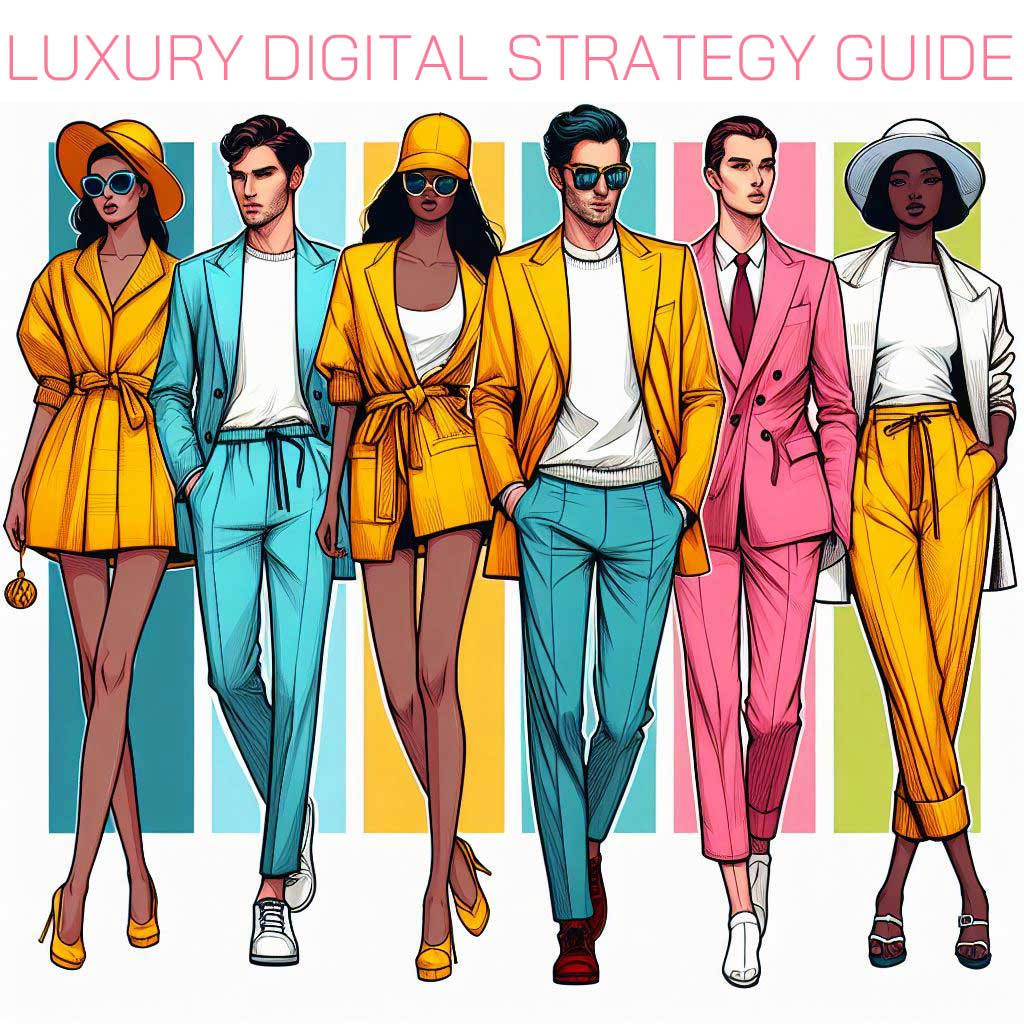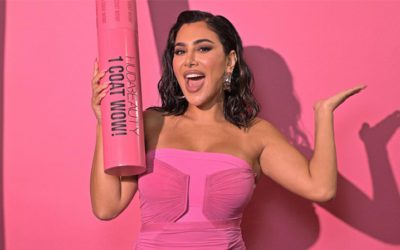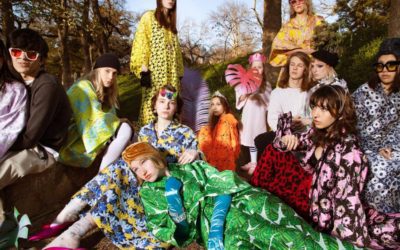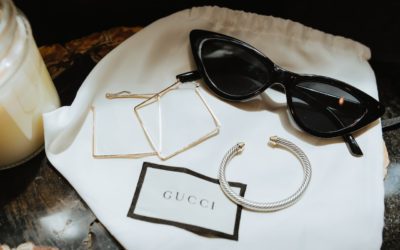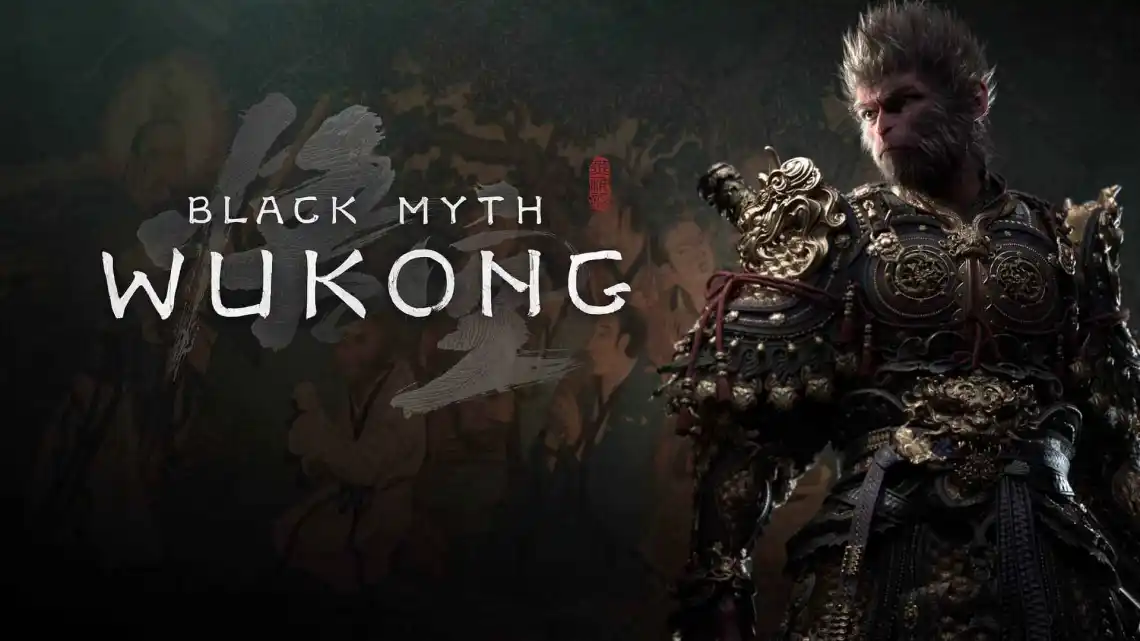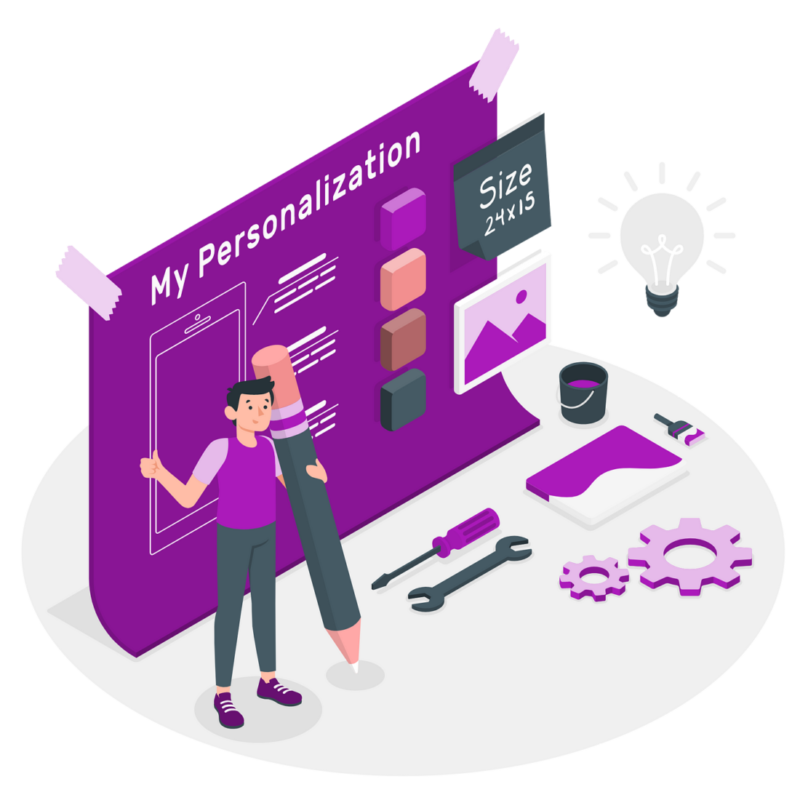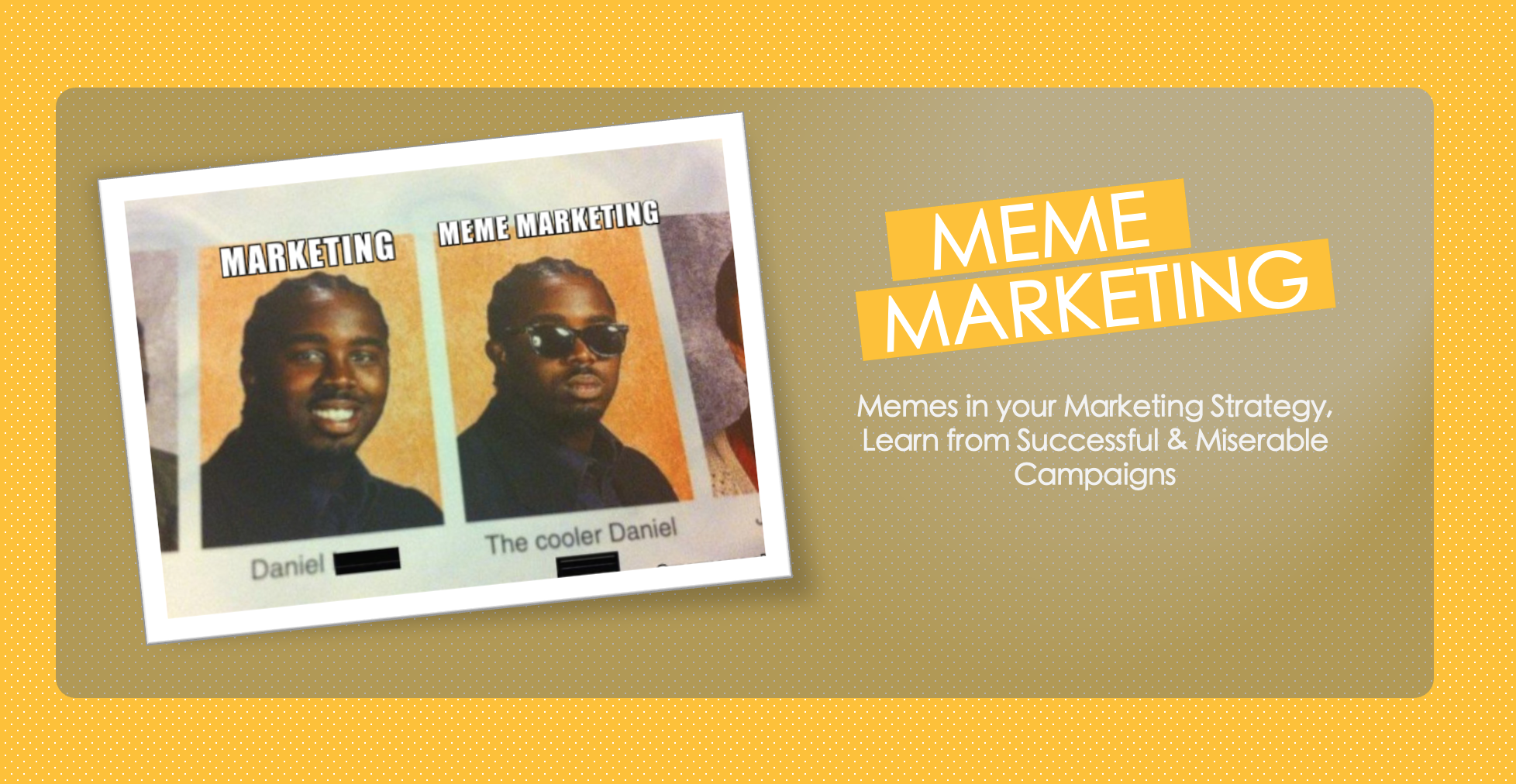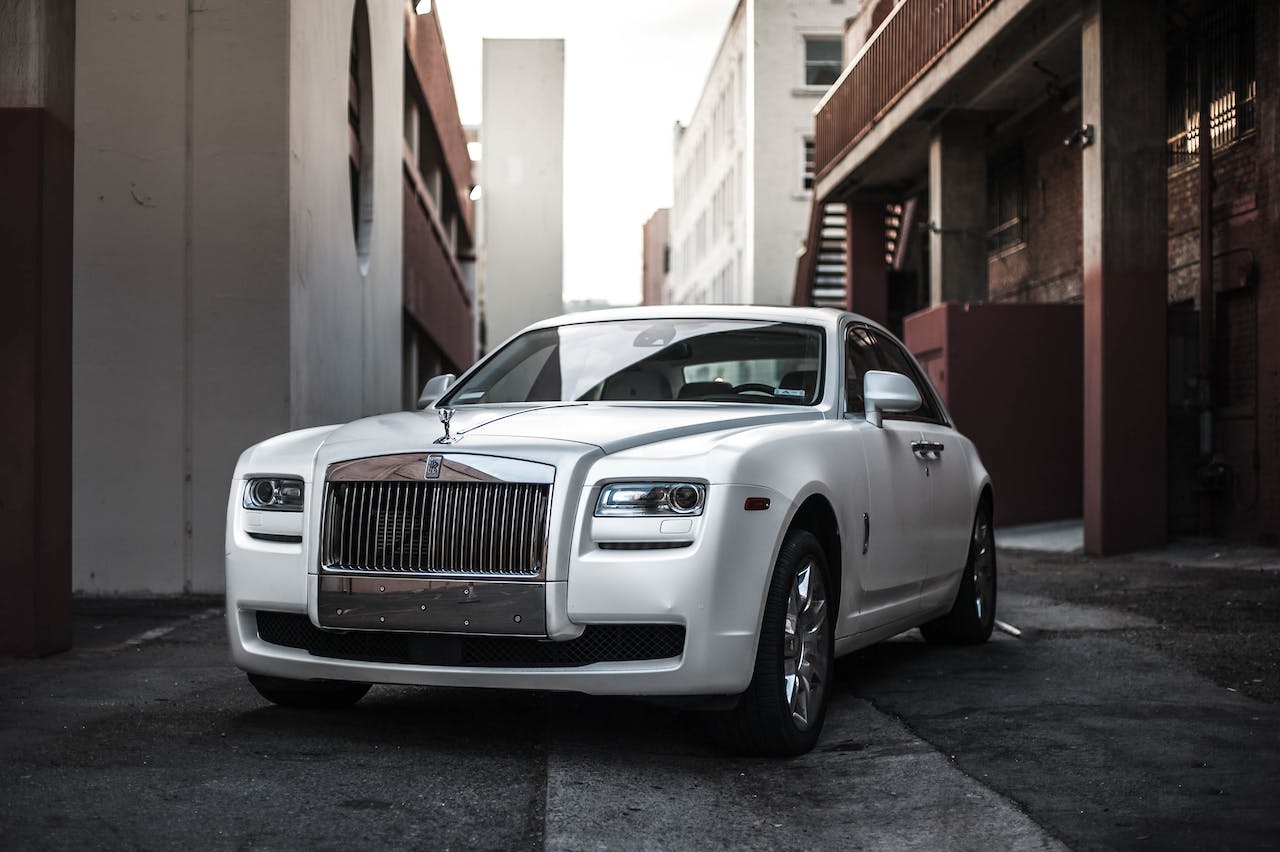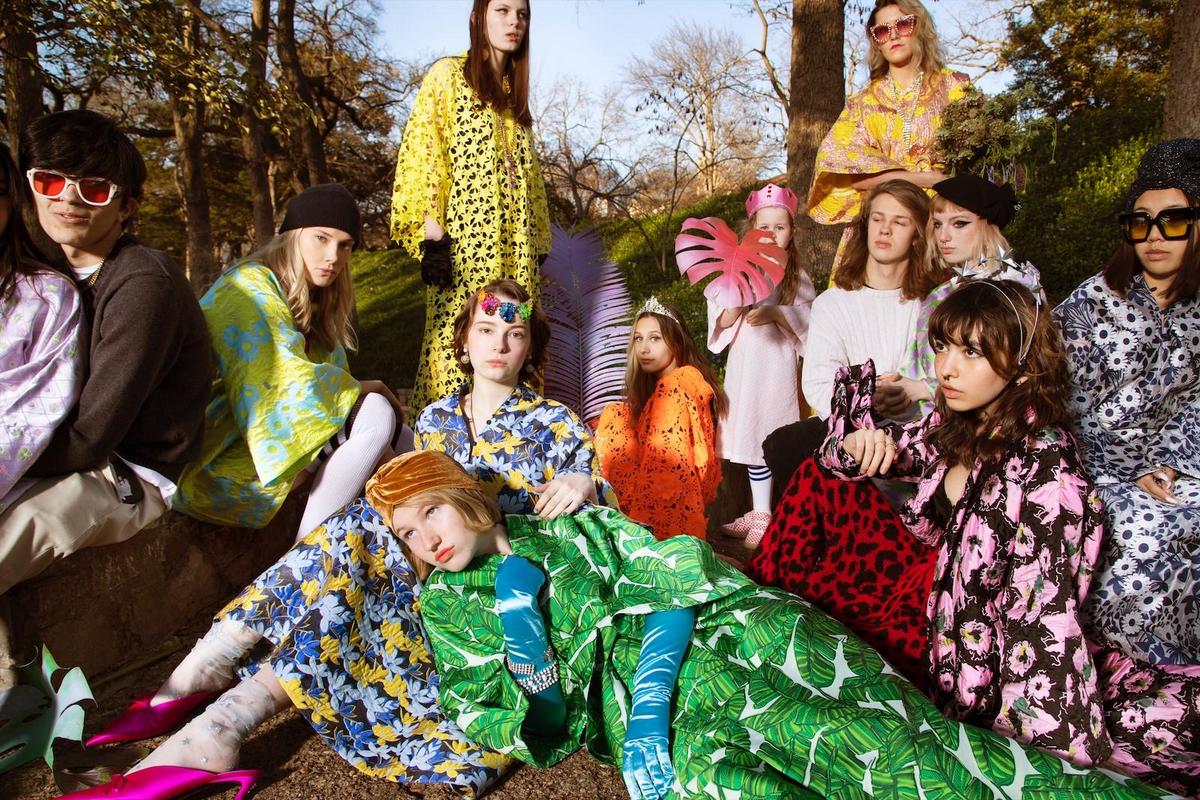Luxury Digital Agency Guide: Strategies & Insights for High-End Brands with Examples
The digital realm is a battleground for luxury brands. Few are captivating high-net-worth individuals (HNWIs) and aspirational buyers.
Today’s luxury consumers are demanding, digitally savvy, meticulous in their research and constantly evaluating that purchase decision in their feeds. To thrive in this competitive landscape, luxury brands must embrace a strategic and data-driven approach to digital marketing.
As Digital Strategists we have gone where no one has gone before to design an updated Luxury Digital Marketing Guide with practical insights to create a winning digital strategy. We will focus on defining or redefining your audience, creating content with strategic storytelling, spreading the message while analyzing bleeding-edge trends (AI, Social Media), and measuring and optimizing results.
Brace yourselves, we promise a fun ride.
Not sure where to start? Choose your adventure below!
See what is in this article:
Click here to learn more
- Luxury Market: Trends and its Digital Transformation
- Luxury Digital Marketing: A Successful Roadmap
- Understanding the Affluent Consumer in the Digital Age
- How to Target Affluent Consumer Behavior: A Step-by-Step Guide with Examples
- Craft a Compelling Brand Story: Content that Go Beyond Product Descriptions
- Strategies for Maintaining Brand Exclusivity Online for Luxury Brands
- Social Media Channels: Selecting the Best Platforms for Your Luxury Brand
- Optimizing Digital Channels for Luxury Engagement
- SEO Strategies for Luxury Brands:
- PPC Strategies
- Email Marketing Strategies
- Online Reputation Management
- Emerging Trends & Technologies for Luxury Strategies
- Opportunities and Challenges for Luxury Brands
- Staying Ahead of the Curve: AI, Machine Learning
Luxury Market: Trends and its Digital Transformation
The luxury industry has witnessed remarkable resilience with significant growth and adaption through digital transformation. The global luxury market was worth €1.5 trillion in 2023, marking an increase of 8-10% compared to 2022, but for 2024 it is forecasted to grow 2-4%, depending on the region.
This highlights the urgent need for luxury brands to accelerate this digital transformation to create smarter digital marketing strategies and true omnichannel experiences for the new luxury consumers who are Millennials and Gen Z for now, but Gen Alpha soon.
Luxury Digital Marketing: A Successful Roadmap
What is Luxury Brand Marketing Strategy?
A luxury brand marketing strategy goes beyond selling, it curates experiences to connect with the target audience and maximize brand value and price by leveraging multiple brand elements, such as heritage, country of origin, craftsmanship, scarcity, and prestige.
What is the difference between Luxury Digital Marketing Strategy and Mainstream Digital Marketing Strategy?
While mainstream digital marketing strategy targets a broad audience and focuses on mass appeal, high volume, and shorter sales life cycles, Luxury Brand Marketing Strategy focuses on cultivating brand prestige, storytelling, and a sense of exclusivity. Its approach lies in the emphasis on brand perception, consumer experience, and the sale of a few high-ticket items targeted to individuals.
Luxury brands know the customer journey is emotional and the products are often seen as investments, even means of self-expression. The Luxury customer journey can often start with the purchase of an accessory like lipstick or perfume and that can lead to luxury cars or luxury experiences.
Understanding the Affluent Consumer in the Digital Age
What are the Key Demographics driving Luxury Consumption online?
Not so long ago Baby Boomers were the main target, but today, Millennials and Gen Z are accounting for a significant portion of online luxury purchases in the luxury market.
These digital natives conduct extensive online research before making buying decisions, heavily influencing purchasing decisions through social media reviews, influencer endorsements, and brand storytelling.
Understanding their unique online behaviour and preferences is crucial for crafting effective digital marketing strategies.
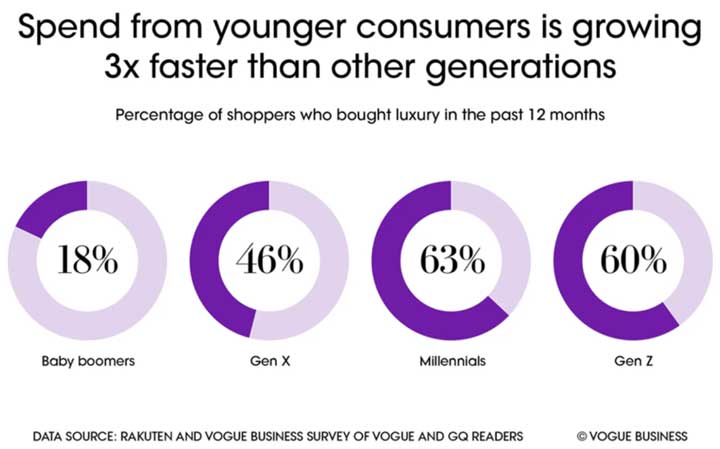
Luxury Spending – Millennials & Gen Z show the majority of spending for 2023
Targeting Affluent Consumers with Digital Marketing Strategies
How to Target Affluent Consumer Behavior: A Step-by-Step Guide with Examples
Define Your Ideal Customer Profile (ICP)
When thinking about how to target luxury consumers, the first step is to define who your target customer is. If you have already defined your target customer, after some time there is a need to re-define your customer because of the shifts your direct, indirect competitors, or just the environment have made over time. This is also essential if your brand is expanding to new markets.
Current trends and insights show that Millennials and Gen Zers values like emotional connection, authenticity, sustainability, and price justification are causing significant shifts that even established luxury brands are adapting to.
After some years, the target customer needs to be redefined as their preferences and habits may have changed due to external factors such as direct or indirect competitors, economic environment, or just ageing.
For example, in China, where luxury spending is forecasted to have more growth, Prada collaborated with Douyin Content Lab during the 2022 Beijing Winter Olympics, to spotlight female power in sports by designing custom SS22 pieces for four female athletes and produced a campaign video, focusing on the #Beautyhasitsownpower. The first campaign garnered 48 million views and 100 million online exposures. Searches for “Prada” increased by 56% compared to the previous year. Additionally, Prada’s subsequent campaigns have resulted in 130 million reproductions 48 hours after being launched, indicating the effectiveness of their tailored marketing approach in connecting with their target audience.

Prada Dresses Female Chinese Olympics Athletes to Capture More Market
Define or redefine your audience
The table below will help you in refining your target, making it easier for segmentation.
| Demographics | Psychographics | Media Consumption Habits |
| Age, income level, occupation, location. | Values, interests, lifestyle aspirations, online behavior. | Preferred social media platforms, frequented websites, type of content for engagement. |
Craft a Compelling Brand Story: Content that Go Beyond Product Descriptions
Why Storytelling Matters in Luxury Marketing?
Storytelling in luxury marketing is pivotal because it can differentiate your product in a saturated market where quality, usability, and aesthetics of luxury goods are often comparable.
How? Luxury storytelling goes beyond features and benefits – it taps into emotions, conveying heritage, values, and exclusivity. This emotional connection transforms products into aspirational experiences, connecting with affluent consumers on a deeper level, transforming products into emotional investments and fostering long-term brand loyalty.
How to Differentiate your Luxury Brand from Others?
This is the biggest challenge for any brand not only luxury brands, but the short answer is the brand and product “storytelling”. A study by Boston Consulting Group found that luxury is shifting from ‘having’ to ‘being’ and ‘self-expression’, indicating that consumers value experiences as much as products. Storytelling is key in presenting these experiences.
Explain your unique value and why it matters. The best ways to do this is for you to guide the story but not limit the storytelling. Let your customers talk about your product and your brand in your platforms (think UGC). Remember that 80% of all luxury sales are influenced by online content. Storytelling adapted for digital platforms can significantly impact consumer decisions and brand perception.
For example, Rolex utilizes storytelling to highlight the heritage and meticulous craftsmanship behind their timepieces and durability which adds to their fame for not advertising their products. Their website and social media platforms showcase the artistry involved in watchmaking, but their community drives the narrative as well for an “investment piece”.
Practical Steps for Creating a Compelling Luxury Brand Story
Step 1: Define or Redefine the Brand Story Pillars
- Heritage and Legacy: Frame these questions from the perspective of your audience, What is the history of the brand? What are its values? Why should the customer care?
- Craftsmanship and Quality: Highlight the meticulous attention to detail and dedication to quality that goes into your products.
- Innovation and Design: Showcase your brand’s commitment to pushing boundaries and creating innovative designs.
- Social Responsibility: Emphasize your brand’s dedication to ethical practices and social impact, if applicable. Partner with relevant causes and showcase your brand’s commitment to sustainability and ethical practices.
Actionable Tip: If you don’t have a Brand Story yet or you want to redefine it, conduct internal workshops to brainstorm and refine your brand story pillars. Incorporate insights from your target audience research to ensure your narrative resonates with their values and aspirations.
Step 2: Choose Compelling Storytelling Formats
- High-Quality Visual Content: Utilize stunning photography and videography to showcase your products based on your brand story and the way you want to communicate it.
- Less-Curated Visual Content: There’s a trend of showing a raw side of things to communicate authenticity, take advantage of this and work with micro-influencers or opinion leaders.
- Engaging Visual and Written Content: Share stories about your brand’s heritage, craftsmanship, and the inspiration behind your designs in long and short video formats combined with blogs or articles.
- Interactive Social Media Content: Leverage features like Instagram Stories and Reels to create engaging content that tells your brand story in bite-sized pieces. Also, benefit from the trend of TikTok and YouTube as search engines.
- Example: Cartier utilizes a combination of stunning product photography, short brand story videos, and behind-the-scenes glimpses into their design process on their social media platforms.
Actionable Tip: Tailor your content formats to the specific platforms you are using. For example, curated and longer-form content might be suitable for your brand blog, while short high-quality and less-curated videos are ideal for Instagram, TikTok, Pinterest, and even Line (if you are in Japan).
Step 3: Differentiate Your Storytelling with Interactivity
Luxury consumers crave unique connection and engagement, not just content. Interactive storytelling allows them to participate in your brand narrative, deepening the emotional connection and fostering a sense of belonging.
Luxury brands have a unique challenge. Their stories need to be captivating enough to resonate with discerning consumers, yet maintain an aura of exclusivity.
- Develop Interactive Content & Multi-Sensory Storytelling: Luxury is an experience for all senses. Communicate your brand’s values utilizing high-quality visuals, captivating videos, and even evocative music.
- Embrace User-Generated Content (UGC): Encourage customers to share their experiences with your brand using a branded hashtag or contest. This not only leverages the power of social proof but also allows customers to become co-creators of your brand story. This is what we mean by not limiting the ways of telling the core story.
- Example: Burberry launched a social media campaign inviting customers to personalize their iconic trench coat using an AR filter. This interactive experience generated significant social media buzz and brand engagement.
Step 4: Build Brand Communities through Storytelling
Luxury goes beyond just the product – it’s about belonging to a community with shared values. Storytelling allows you to connect with customers on a deeper level, fostering a sense of community and brand loyalty.
A community can also influence new or aspirational customers to explore the brand passively, as they may be assessing the purchase of their first luxury goods.
- Highlight Shared Values: Integrate stories into your marketing that showcase your brand’s commitment to social responsibility, sustainability, or a specific cause that resonates with your target audience. This creates a sense of shared purpose and strengthens the emotional connection.
- Example: Dior partners with select online retailers to offer exclusive capsule collections unavailable through their main website. This strategy creates a sense of exclusive community and incentivizes online shopping through these select partners.
- Curate Exclusive Events: Host exclusive events or online forums that bring together brand enthusiasts and foster a sense of community. These events can feature brand storytelling elements, product showcases, or opportunities to interact with brand representatives.
- Example: Patagonia which is known for its commitment to environmental activism. They regularly host film screenings and discussions about environmental issues, creating a community around shared values that extend beyond their products.
Cultivating Exclusivity in the Digital Luxury Consumer
The Challenge to Exclusivity
Luxury brands face the challenge of leveraging digital tools to enhance their exclusivity while maintaining traditional luxury values and satisfying expectations that match the high standards of physical stores. Here’s how they do it to preserve the aura of rarity and prestige.
Strategies for Maintaining Brand Exclusivity Online for Luxury Brands
How do luxury brands maintain exclusivity in the digital realm?
Limited-Edition Offerings and Pre-Releases
A useful strategy is the scarcity principle which states that the less available something is, the more desirable it becomes. By offering limited edition products and creating waiting lists for new releases, luxury brands generate demand, create a sense of urgency, and maintain the exclusivity of their offerings.
- Partner with Influencers or Celebrities for Exclusive Collaborations: Partnering with a relevant influencer or celebrity for a limited-edition capsule collection can generate significant buzz and exclusivity. This strategy allows you to leverage the influencer’s audience reach and tap into their established brand image.
- Example: Adidas successfully partnered with musician Pharrell Williams to create a limited-edition line of sneakers under his Human Race brand. The collection’s exclusivity and association with Pharrell’s established image fueled high demand and desirability.
- Limited Availability & VIP Programs: For pre-sales for highly anticipated products, establish VIP programs for loyal customers or members. This rewards brand loyalty and creates a sense of privilege for those who gain early access.
- Example: Gucci offers exclusive pre-access to online sales for members of their Gucci Circle loyalty program. This incentivizes customers to engage with the brand and rewards them for their loyalty.
Targeted Personalized Experiences and VIP Access
In uncertain economic times, this is a valuable strategy since personalization fosters a sense of connection, exclusivity, and differentiation, making customers feel valued and understood, decreasing the likelihood of switching brands. By utilizing past purchase history, data analytics, and consumer insights, luxury brands offer personalized services and products off and online.
- Leverage Data for Personalized Content and Recommendations: Utilize customer data to personalize marketing messages, product recommendations, and website content. This ensures that each customer receives content relevant to their interests and purchase history.
- Example: Net-a-Porter, the luxury fashion e-commerce retailer, utilizes customer data to personalize product recommendations and curate shopping edits based on individual browsing behavior and past purchases.
- Offer Exclusive Virtual Consultations with Brand Experts: Provide personalized consultations combining human brand experts and AI assistants to ensure privacy and accuracy, especially when complying with European or Asian regulations. This allows customers to receive one-on-one attention and guidance, replicating the personalized service traditionally offered in-store.
- Example: Louis Vuitton offers virtual styling consultations where customers can connect with (human and AI) stylists to receive personalized recommendations and discuss their fashion needs.
Building a Community Around Shared Values
Luxury brands can cultivate exclusivity by establishing a community around shared values and brand identity that fosters connection and belonging (thus, loyalty).
- Curated Online Forums & Social Media Groups: Create exclusive online forums or social media groups for loyal customers. This fosters a sense of community and allows customers to connect with like-minded individuals who share a passion for the brand. The best part is that you can moderate the conversation and perform social listening without depending on a third-party tool.
- Example: Harrods, the luxury department store, offers a private members’ club called “The Signature Lounge.” Membership provides access to exclusive events, product launches, and networking opportunities, fostering a sense of community and exclusivity for loyal customers.
- Social Clubs or Events Partnerships: Partner with high-end social clubs or events that cater to a similar target audience. This allows you to reach your audience but also you can put your product or service in context and give an exclusive experience.
- Example: Veuve Clicquot, the champagne brand, is known for sponsoring exclusive art exhibitions and social events, associating their brand with luxury and cultural experiences.
Social Media Channels: Selecting the Best Platforms for Your Luxury Brand
In a Digital Luxury Marketing strategy, the primary objective of digital platforms is to connect with luxury consumers, however, effective engagement requires a nuanced understanding of the platforms and strategies that resonate with the luxury brand’s unique audience.
Social Media platforms are varied and the younger demographics influence older ones, showing in a study that 63.3% followed a brand and 33.3% have made purchases through social media, commonly known as Social Media commerce which is complementing regular e-commerce. That is why, not all platforms are created equal, so the key lies in selecting the best channels for your purpose

Social media engagement of Luxury consumers with brands and services worldwide in Q4 2023, by age
Which Digital Channels are Most Effective for Engaging Luxury Consumers?
The short answer is, it depends on your brand, product, and your message. As of 2024, approximately 59.3% of the global population actively use social media. Luxury consumers expect a seamless and sophisticated online experience that mirrors the exclusivity and prestige of the brand.
So, as promised, we shall go where no digital strategist has gone before and we will give an in-depth look at the most popular digital channels for luxury brands and recommend when to use them:
| Channel | Platforms | Description |
| VISUAL SOCIAL NETWORKS | Instagram, Pinterest, Snapchat, TikTok, Amazon Ads | Showcases products and storytelling through images and videos. |
| CONTENT MARKETING | Storytelling thru Blogs, Videos, Podcasts | Engages consumers with educational and entertaining (edutainment) aspirational content. |
| OMNICHANNEL STRATEGIES | Mobile Apps, AR, VR,
Facebook & TikTok |
Provides a cohesive brand experience across multiple digital touchpoints.
Facebook & TikTok use Social Commerce and other offerings in this area |
Social Media Strategies for Luxury Brand Promotion
When to Use Specific Social Media Platforms?
The choice of platform depends on the brand’s target audience, campaign goals, and the type of content being shared. Each platform serves a different purpose and reaches distinct segments of the luxury market. Tailor the content and approach to the platform’s strengths and your users’ preferences.
- Linkedin: Professional affluent demographic with robust targeting options.
- Snapchat: Ephemeral content and a younger demographic.
- TikTok: Mainly, Gen Z engagement through short-form video content, used as a search engine.
- Facebook: For detailed brand stories and robust targeting options.
- YouTube: For long-form content and high-quality video storytelling, used as a search engine.
- Twitter: For real-time engagement and broad audience reach.
- Instagram: For visual storytelling and influencer collaborations and engagement of fashionistas and visual audiences.
Optimizing Digital Channels for Luxury Engagement: Mastering Social Media Engagement for Luxury Brands
Content is King and Social Media Context is Queen
Connect through your content. Build emotional connection through storytelling, while showcasing your products. Create a unique story around your brand story, highlight the craftsmanship behind the products, and show the lifestyle associated with your brand including the audience.
Go beyond product-centric content connect with your customer through stories and emotions to foster brand loyalty, meaning re-purchase.
For example, Gucci has been recognized by Vogue Business Index for its storytelling approach, combined with strategic ambassador strategies and platform-oriented content, which has led to increased engagement and sales. For the Cruise 2024 show in Seoul Gucci presented a collection that celebrated urban and cosmopolitan global fashion. The show took place at the historic Gyeongbokgung Palace, blending different eras and cultures, and featured a soundtrack by South Korean composer Jung Jae-il.
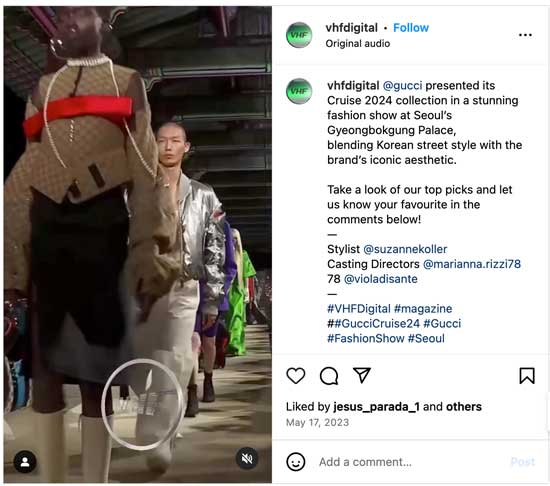
Gucci Cruise 2024 Collection that used Localization to connect with Asian (Korean) communities.
Partner with Micro-Influencers
Micro-influencers tend to have higher engagement rates, up to 60% more than macro-influencers and tend to have 20% higher conversion rates and their followers are often more actively involved, leading to more meaningful interactions.
To implement a campaign fast and in an effective way, partner with micro-influencers that align with your target audience.
For example, Daniel Wellington, a premium watch brand, offered products or other incentives to influencers for sponsored posts on platforms like Instagram, YouTube, and TikTok. They also ran a #DWPickoftheDay contest, encouraging influencers to create content for a chance to be reposted on the brand’s official account.
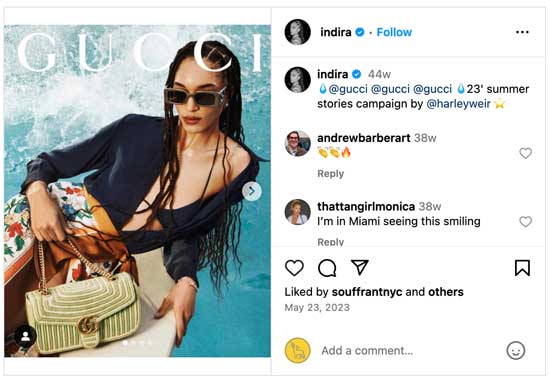
Gucci partnering with Micro-Influencer Indira
User-Generated Content (UGC) Campaigns combined with Niche Targeting
Encourage user-generated content targeting a niche by launching branded hashtags or contests. This allows customers to become brand ambassadors and share their experiences with your products, fostering a sense of community and authenticity.
For example, GoPro’s social media strategy at the beginning targeted adventurers, surfers, skiers, and motorsports with a primary objective, of filming themselves to make improvements but enabling them to share the journey, this UGC made the brand explode.
GoPro encouraged customers to share videos captured with their cameras using the #GoPro hashtag. This user-generated content showcases the GoPro’s cameras’ functionality in a real-world setting and leverages the power of social proof to influence potential customers

GoPro TikTok account still follows the principles of showing Community’s “Adventures”
Cultivating Conversation: Community Management for Luxury Brands
Social Listening is Key
Because it allows luxury brands to tap into real-time consumer feedback, insights, and adjust their marketing strategies accordingly. By monitoring social media platforms for mentions and conversations, brands can gain actionable insights that help them understand consumer desires, improve customer experiences, and ultimately drive sales. Always address customer inquiries promptly and professionally, fostering a sense of responsiveness and building trust with your audience.
If the systems or processes to obtain concrete data are too complex or slow, with Social Listening you can test a variety of messages and spread it through influencers to give the personalization and approachability that reinforces positive brand perception.
For example, Gucci collaborated with Balenciaga during the Pandemic in “The Hacker Project” because customer habits and preferences were changing to using e-commerce. They targeted Millennials and Gen Z, highly active in Social Media, which generated significant engagement on social platforms like unboxings, reviews by professionals, and fashion bloggers. This contributed to both brands’ growth by reaching new audiences, especially younger generations. The collaboration gathered new consumer insights and identified market dynamics gained from social listening, leading to sales and positive brand awareness for both brands.
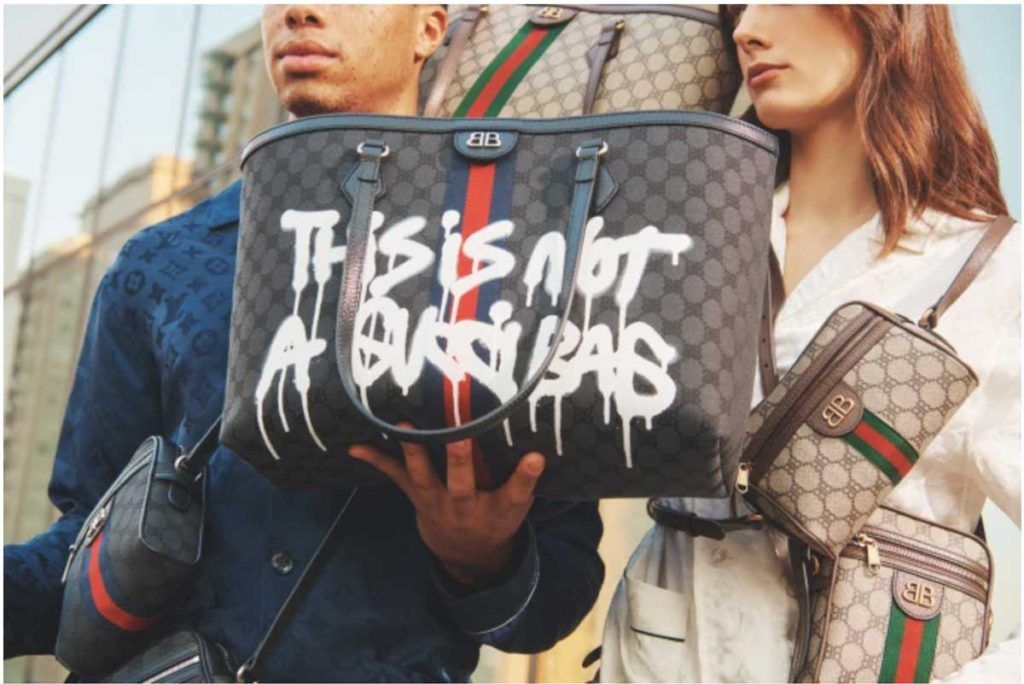
GUCCI X BALENCIAGA HACKER PROJECT BAGS – It lead to more sales and positive brand awareness
Interactive Live Streams or Q&A Sessions Hosting
Utilize platforms like Instagram Live or Twitter Spaces to host live Q&A sessions or behind-the-scenes glimpses into your brand. This allows for real-time interaction with your audience and fosters a sense of exclusivity for those who participate.
For example, Louis Vuitton has successfully utilized Instagram Live to host exclusive interviews with brand ambassadors and showcase their latest collections in real-time, creating a sense of excitement and exclusivity for viewers.
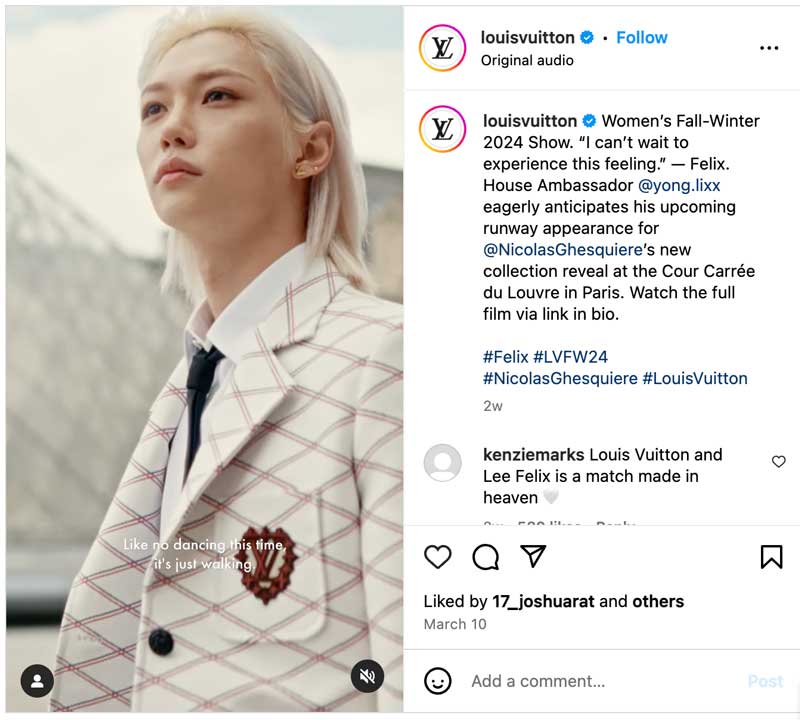
Louis Vuitton House Ambassador for China
.
Measuring ROI for luxury digital marketing campaigns
The Digital Strategy for luxury marketing–as we mentioned before–is different from the regular Digital Strategy as brand perception and customer experience often outweigh direct sales figures and affect an important long-term goal: re-purchase.
Let’s take a look at the metrics and methodologies you should consider:
Key Performance Indicators (KPIs) for Luxury Digital Marketing
Luxury brands should track a combination of traditional and bespoke KPIs to measure digital marketing success. These are not all, but the most important:
| KPI | Objective | Definition, How to Use & Apply |
| Customer Lifetime Value (CLV) | Indicates brand loyalty and customer retention | Measures the total revenue a business can expect from a single customer account throughout the business relationship. To increase CLV, and enhance customer experience and exclusive offerings.
HOW TO GET IT: Usually, this is done through your CRM, but the basics are: Customer Value (CV) = Average Value of Sale * Average Number of Purchases. Customer Lifetime Value (CLV) = Customer Value * Average Customer Lifespan. IDEAL FOR: Subscription-based services or businesses with a high repeat purchase rate. |
| Brand Sentiment | Perception analysis to tailor marketing strategies | Gauges public perception and emotional response to the brand, Important for luxury brands that rely on exclusivity and reputation. Use Social listening tools to analyze all brand’s social platforms.
IDEAL WHEN: Brand image directly impacts sales. |
| Engagement Rate | Campaign performance evaluation (indirect sales) | Measurement for social media campaigns based on likes, shares, comments, and interactions and their quality. Identification of high-value customer interactions.
IDEAL FOR: Brands active on Social Media, with active communities. |
| Conversion Rate | Conversions | Tracks the percentage of users who take a desired action in the Marketing Sales Funnel. Evaluate results of user journeys, web design, calls-to-action, A/B testing, newsletter sign-ups, purchases, etc.
IDEAL FOR: All. |
| Average Order Value (AOV) | Sales indicators | Tracks individual and bundle sales. Useful for Product Bundles, Upsells, Cross-Sells, Limited-time offers, etc. Higher AOVs indicate a successful luxury marketing campaign
IDEAL FOR: Brands with a wide range of products. |
Tracking ROI and Value Attribution
To track ROI and attribute value in luxury digital marketing, consider the following methodologies:
- Multi-Touch Attribution (MTA): This method assesses the value of each customer touchpoint leading to a conversion, which is vital for understanding the complex customer journeys typical in luxury marketing.
- Marketing Mix Modeling (MMM): A statistical analysis technique that estimates the impact of various marketing tactics on sales and then forecasts the impact of future sets of tactics.
- Customer Journey Analytics: Tracks the customer’s path to purchase and identifies key interactions that lead to conversion, allowing for more precise value attribution.
| KPI | Objective | Definition |
| Multi-Touch Attribution (MTA) | Conversions | A method assesses the value of each customer touchpoint leading to a conversion.
Essential for multichannel interactions (Catalogue, Email, eCommerce, Store, etc) to understanding the complex customer journeys. |
| Marketing Mix Modeling (MMM) | Sales & Future Sales Forecast | A statistical analysis technique that estimates the impact of various marketing tactics on sales and then forecasts the impact of future sets of tactics. |
| Customer Journey Analytics | Conversions & Identification of Critical Touchpoints | Analysis of the customer’s path to purchase to identify key interactions leads to conversion, allowing for more precise value attribution. |
Data-Driven Refinement
Leveraging data and analytics is non-negotiable in optimizing digital marketing strategies:
- A/B Testing: Comparing two versions of a webpage, landing page, or app to see which one performs better. It’s a straightforward way to test changes to your marketing campaigns in “real time”.
- Predictive Analytics: Uses data, statistical algorithms, and machine learning techniques to identify the likelihood of future outcomes based on historical data. It’s a powerful way to anticipate customer behaviours and preferences.
- Optimization of Customer Segmentation: Dividing a customer base into groups of individuals that are similar in specific ways, such as age, gender, interests, and spending habits, to market more effectively.
By focusing on these KPIs and methodologies, luxury brands can not only measure but also enhance their digital marketing efforts, ensuring that they resonate with their target audience and deliver on the brand’s promise of exclusivity and prestige.
SEO Strategies for Luxury Brands:
Organic website traffic accounts for approximately 53% of the total traffic, and the first organic result on a search results page has an average CTR of 27.6%. This emphasises the need for luxury brands to rank well on search engines. So, the strategies we recommend are effective for expensive high-end products whether your brand is established or up-and-coming.
Focus on Long-Tail Keywords
Luxury consumers often conduct highly specific online searches that point to insights on being closer to making a purchase decision. These are not only less competitive but have a higher conversion intent.
As a recommendation, target long-tail keywords that reflect the specific features and benefits of your products. For example, instead of targeting “designer bag,” target “handcrafted Italian leather tote bag.”
Content Marketing for Brand Awareness
This is a no-brainer but, create high-quality content that educates consumers about your brand heritage, craftsmanship, and the inspiration behind your designs. This content will not only improve your website’s ranking but also establish your brand as a thought leader in the luxury space.
Leverage Influencer Marketing Strategically
Partner with relevant influencers who create high-quality content that aligns with your brand image. Focus on micro-influencers who have a more engaged following for a more authentic impact on SEO.
Partner with Luxury Lifestyle Publications
Partner with high-end publications and websites relevant to your target audience to create co-branded content or secure backlinks to your website. This increases your website’s authority and visibility in search engine results pages (SERPs).
For example, Cartier partnered with Vogue China to create a video series showcasing their latest high jewellery collection. The video series was featured on Vogue China’s website and social media platforms, generating significant brand awareness and website traffic for Cartier.
PPC Strategies
The cost-per-click (CPC) started to increase by 17% in 2022, suggesting that luxury brands need to optimize their PPC strategies to manage higher advertising costs effectively. Pay-per-click (PPC) advertising can be a powerful tool for driving targeted traffic to your luxury brand’s website. This strategy is especially important as the growth for luxury brands is expected to come from Asian markets, as demand in the U.S. and Europe is projected to be flat.
- Target High-Net-Worth Individuals (HNWIs): Utilize Google Ads’ audience targeting features to reach users with specific income demographics. This will ensure your PPC campaigns reach the most relevant audience for your luxury brand, maximizing your return on ad spend (ROAS).
- Focus on Search Terms with High Purchase Intent: Target keywords that indicate a strong intent to purchase, such as “buy designer watch” or “most luxurious handbags.”
- Showcase High-Quality Product Ads: Utilize high-quality product images and videos in your PPC ads to capture attention and showcase the craftsmanship and beauty of your luxury products.
- Retarget Website Visitors: Retarget website visitors who have shown interest in your products but haven’t converted yet. This reminds them of your brand and encourages them to complete their purchase.
For example, Chanel utilised retargeting campaigns in 2024 and now is combining the searched products and complementary products as well to be on top of mind. It also incentivizes them to purchase with special bundles or pre-sales.
Email Marketing Strategies
Email marketing continues to deliver a strong return on investment, with an average ROI of $36 in the US for every $1 spent. It remains a powerful tool for nurturing customer relationships and driving sales in the luxury sector. Here’s how to craft effective email campaigns for luxury brands:
- Segmentation is Key: Segment your email list based on customer preferences, purchase history, and demographics as it is more likely to be opened and acted upon. Send targeted emails with content and offers relevant to each segment. Design your email and message to confirm the information you have on your segment, either way, you’ll get a result out of every effort.
- Personalize the Email Experience: To increase relevance and conversions, AI combined with Machine Learning and a CRM can personalize the email content by using the purchase history and inventory that adapts to those customer preferences. For smaller companies, the personalization might come from AI scrapers.
- Focus on Value and Exclusivity: Value your consumer’s time and differentiate your luxury email marketing with exclusive content, early access to sales, or invitations to special events.
- Partner with Luxury Lifestyle Influencers: Co-create exclusive email content with influencers, and offer curated product recommendations or lifestyle guides. This leverages the influencer’s audience reach and adds a touch of exclusivity to your email campaigns.
For example, Valentino partnered with a 19-year-old (Gen Z) fashion influencer to create an exclusive email newsletter featuring her favourite pieces from their latest collection. The newsletter was sent to Valentino’s email subscribers, generating excitement and driving sales of the featured products.
Online Reputation Management
Protecting Your Brand Image
A positive online reputation impacts luxury brand’s sales and brand loyalty. By demonstrating that you value customer feedback and actively participate in online conversations, positions your brand and reinforces a positive brand image. Here’s how to proactively manage your brand image and address online sentiment:
- Monitor Brand Mentions: Utilize social listening tools to track brand mentions, reviews, and online conversations across various platforms.
- Respond Promptly: Address both positive and negative feedback promptly and professionally. Thank customers for positive reviews and acknowledge negative feedback with empathy and a willingness to resolve any issues.
This is especially crucial if the message has negative or mixed reviews (or has the potential for a PR scandal). For example, Samsung’s “Night Owls” campaign for the Galaxy Watch 4 faced criticism for being insensitive, as it featured a woman running alone at night, which many women would not feel safe doing. This conversation was widely discussed on social media, and had Samsung employed social listening effectively, they could have identified and addressed the issue early on. Despite this, social listening remains a crucial element in a brand’s toolkit to monitor social conversations and avoid potential crises.

Samsung “Night Owls” campaign had criticism from the main target and the company had to remedy with Social Media and PR Strategies
Managing Customer Reviews for Luxury Brands
- Partner with Review Management Platforms: Consider partnering with online reputation management platforms that can help you track reviews, identify potential issues, and streamline your response process.
- Showcase Positive Customer Reviews: Feature positive customer reviews and testimonials on your website and social media platforms. This builds trust and social proof for potential customers.
For example, Ritz-Carlton Hotels utilizes a dedicated section on its website to showcase positive guest reviews and testimonials, highlighting the exceptional experiences guests have enjoyed at their properties.
Advocacy & Loyalty Programs for Luxury Brands
- Encourage Customer Advocacy Programs: Implement customer advocacy programs that incentivize satisfied customers to leave positive reviews and share their experiences with your brand.
For example, Sephora has a successful Beauty Insider program that rewards loyal customers with points for purchases and reviews. This incentivizes customers to engage with the brand and share their positive experiences.
Emerging Trends & Technologies for Luxury Strategies
The digital landscape is constantly evolving, and luxury brands must embrace innovation to stay ahead of the curve. Here are some key trends to watch:
- Augmented Reality (AR) and Virtual Reality (VR): AR has had a resurgence in try-on experiences, while VR offers exciting possibilities for luxury brands to showcase products in new and immersive ways. Imagine virtually trying on a piece of jewelry or experiencing a virtual tour of a luxury destination.
- Artificial Intelligence (AI): AI is used by Luxury Brands for personalization at scale and to personalize and shorten the customer journey by offering product recommendations, chatbots for customer service, and dynamic content tailored to individual preferences.
- Meta’s AI Sandbox allows advertisers to experiment with AI-generated ads on Facebook. Also, Coca-Cola has had AI competitions using DALL-E and ChatGPT.
- AI Algorithms and Machine Learning (ML): AI is slowly being adopted by global and regional Luxury brands but they are cautious due to security issues, which is why it is used as AI algorithms to analyze trends, consumer behavior, and social media data or in the design and creative process. For instance, Gucci combines AI with human creativity to predict upcoming fashion trends and design collections that resonate with evolving consumer preferences.
Related: Top 10 Luxury Digital Trends for 2024 and Beyond
Opportunities and Challenges for Luxury Brands
These emerging technologies offer immense opportunities for luxury brands to enhance customer experience, brand storytelling, and product visualization. However, challenges include ensuring seamless integration, maintaining brand consistency across platforms, and addressing potential privacy concerns.
Staying Ahead of the Curve
- Try New Services from Boutique Agencies: Be dynamic and beat the corporate limitations of systems and big teams. Having worked with global companies from Lenovo, and Nissan to luxury brands like Dior or LVMH as employees and as suppliers in Advertising agencies, we recommend diversifying and trying new services to be more proactive.
- Let’s chat on how you can stay ahead or subscribe to our industry luxury strategy newsletter, or go into the wild, attend conferences, and participate in online forums.
- Experiment and Adapt: Don’t be afraid to experiment with new technologies and adapt your digital marketing strategies to leverage the latest advancements. However, ensure any experimentation aligns with your brand image and target audience.
Adapting the Luxury Marketing Strategy
This guide has equipped you with a comprehensive understanding of luxury digital marketing strategies. Remember, the key lies in understanding your target audience, crafting a compelling brand narrative, and leveraging the power of digital channels to cultivate exclusivity and brand loyalty.
Adopt a strategic and flexible approach to differentiate from other luxury brands. That’s the key to long-lasting success in the Luxury Marketing Strategy arena.
Now it’s your turn to implement the strategies and insights explored in this guide. What is your biggest challenge? If you know what to do but don’t know where or how to start, let’s get in touch. We’d love to hear from you.
FAQS
How to Target Affluent Consumers with Digital Marketing?
Conduct thorough market research to understand the demographics, psychographics, and online behaviour of your target audience within the millennial and Gen Z segments. Utilize social listening tools to track brand mentions and online conversations to gain real-time insights into consumer preferences. Learn how to pinpoint high-net-worth individuals (HNWIs) through strategic digital channels, leveraging long-tail keywords and understanding their evolving expectations for digital experiences.
What role does social media play in the digital strategies of luxury brands?
Social media serves as a powerful tool for luxury brands to engage with affluent consumers, build brand awareness, and leverage customer advocacy. By fostering authentic interactions and expanding reach across platforms, brands can enhance their digital presence effectively.
Why is it essential for luxury brands to prioritize localization and multilingual optimization in their digital strategies?
Localization and multilingual optimization allow luxury brands to enhance their online visibility and cater to diverse audiences worldwide. By tailoring content and SEO strategies to specific regions and languages, brands can effectively connect with affluent consumers and drive global growth.

